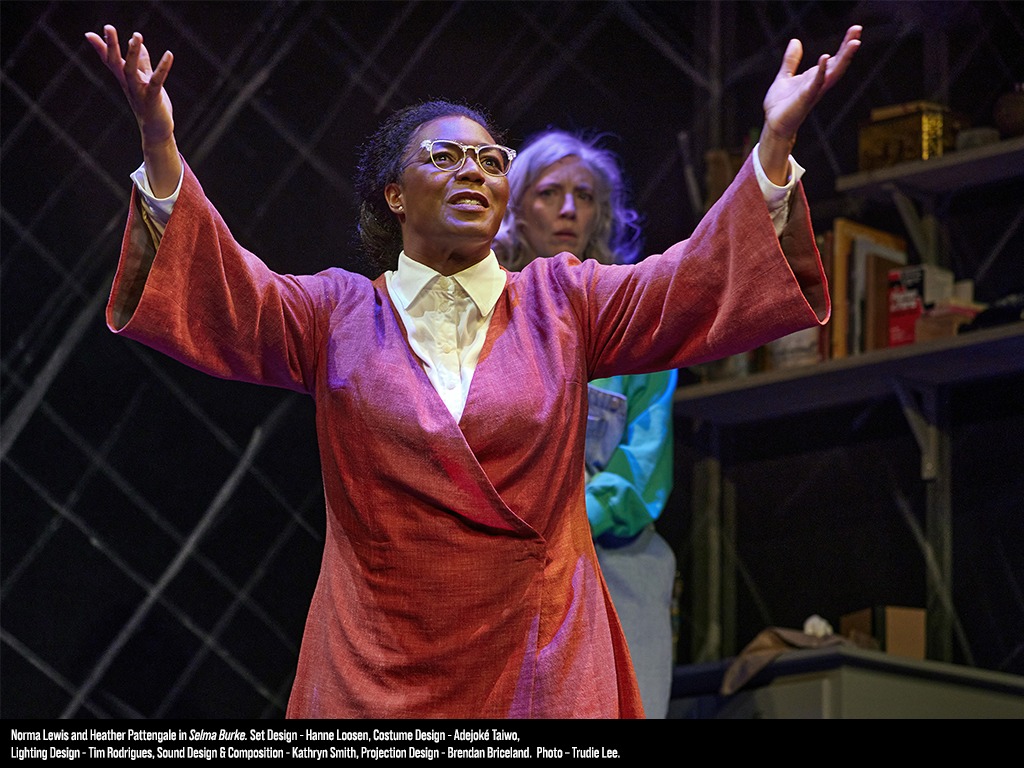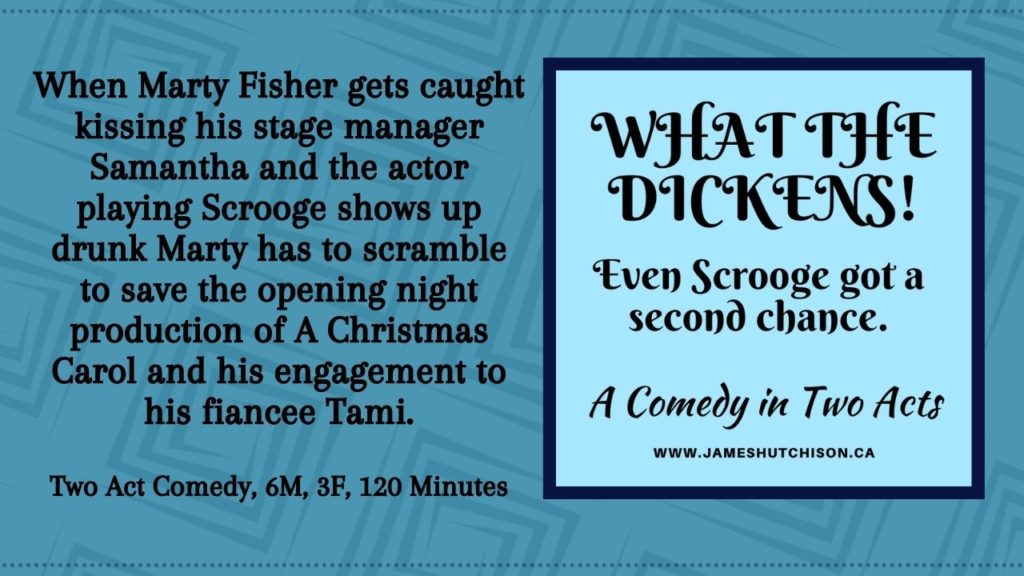
Theatre Calgary and Alberta Theatre Projects have teamed up to premiere the imaginative and highly entertaining play Selma Burke by Calgary playwrights Maria Crooks and Caroline Russell-King.

Selma Burke was an African American sculptor who played a major role in the Harlem Renaissance movement of the 1920s and 30s which was an intellectual and cultural revival of African American music, dance, art, fashion, literature, theatre, politics, and scholarship.
Burke used her talent to immortalize such historic figures as author and African-American civil rights leader Booker T. Washington, philanthropist, humanitarian and civil rights activist Dr. Mary McLeod Bethune, composer, songwriter, conductor and Jazz musician Duke Ellington, and Civil Rights leader Martin Luther King, Jr. who advanced civil rights for people of colour in the United States through the use of nonviolent resistance and nonviolent civil disobedience.
Among her more famous works is a bas-relief bronze plaque honouring President Franklin D. Roosevelt and the Four Freedoms which he outlined in his State of the Union speech to Congress in 1941 as Freedom of speech; Freedom of worship; Freedom from want; and Freedom from fear. Burke’s portrait of FDR is recognized by many as the inspiration behind the design of Roosevelt’s portrait on the American dime, which was something she never received credit for in her lifetime.
Caroline and Maria have written a rich and thought-provoking play about the life of Selma Burke that also explores the meaning of art, the Civil Rights Movement, racism, and censorship. I asked Maria and Caroline what sort of experience they hope audiences are going to have when they come to see the play.
CAROLINE RUSSELL-KING
Our goal is to entertain. Our play is not a lecture on art or a biography, it’s a flight of fancy. Selma lived nearly a century – these are ninety minutes of fun.
MARIA CROOKS
An entertaining, stimulating and very humorous one. We hope the audience will find the use of actors playing statues and other objects to be innovative and clever. We also hope that they enjoy getting to know this feisty, intelligent, gifted artist who deserves to be recognized and remembered as a one-of-a-kind artist and human being.

JAMES HUTCHISON
What was your process like working on the play together and what do you think are the key elements that make for a successful writing partnership?
CAROLINE
I think complementary strengths are important. I’m obviously not from Jamaica like Claude McKay is in the play and Maria is. Maria brings her knowledge of French as I am sadly unilingual. Maria is also a great editor. When I am creating plays in my head form and from can often look the same on the page.
MARIA
It was indeed a very stimulating, interesting process for both of us. We brainstormed together, wrote scenes individually then compared the writing and chose sections that best conveyed what we wished to express. We argued, we laughed, we fought to convince the other person of the merit of our ideas. For me, the most important elements that made for our successful partnership were the respect and trust that I have for Caroline’s extensive knowledge and experience as a playwright. She has written numerous award-winning plays, she is also a dramaturg, a critic, and a playwriting instructor. In fact, she was my playwriting instructor and has done the dramaturgy on all my plays.

JAMES
There’s a note in the script before the play begins where you say, “Selma Burke lived from 1900 to 1995 which is approximately 49,932,000 minutes – here imagined are 90 of them.” I loved that because it’s a humorous observation that illustrates the challenge of trying to tell a life story in the span of a play. So, how do you do that? How do you go about distilling the essence of a person’s life into an evening of theatre?

MARIA
We wanted to demonstrate some very salient points about Selma: how gifted an artist she was, her determination to succeed as a sculptor despite having been born Black, poor, and female in the southern US. The obstacles she faced, and the triumphs and accolades that she garnered, the people she knew, including a veritable Who’s Who of the Harlem Renaissance, presidents, and artist she studied with in Europe, the remarkable events that she witnessed, participated in and chronicled of the tempestuous era that was the 20th century. We wanted to do so dramatically but also with humour.
CAROLINE
It’s all about peaks and valleys. I always tell my playwriting students you want to see characters on their best days and their worst days not a Wednesday.
JAMES
One aspect of the play that works really well that you mentioned is that you have actors on stage being the art – the sculptures – that Selma creates. It’s an effective and theatrical way to bring the art alive and to tell Selma’s story. Tell me about how you came up with that idea and what it adds to the play.
CAROLINE
Having her work come to life is very important. In plays there are three types of conflict – person vs person, person vs environment, and person vs self. In Shakespeare’s time characters had soliloquies to express internal conflict. Today people who speak out loud to themselves are either on the phone with earbuds or mentally unwell. So, her relationship with her art is a mechanism to show internal conflict. Secondly, we so often see plays on the stage that could be screenplays or done in other media like TV – I wanted the play to be theatrical. What theatre does really well – is theatre.
MARIA
Caroline had the brilliant idea to have actors portray the artwork and other inanimate objects. This idea is not only dramatic, but as the audience will see, hilarious at times.

JAMES
As you got to know Selma from doing your research and writing your play what sort of person was she do you think and what do you think her hopes would be in regards to her legacy and the art she created during her lifetime?
MARIA
She wanted, I believe, to be remembered as an African American artist who created important works and who wanted to uplift her people though her art.
CAROLINE
I think she had a strong vision for her work and the confidence to pull it off – her art speaks for itself. The language of her art is deep and rich – I’m totally in love with her.
JAMES
A couple of the topics touched on in the play are artistic freedom and censorship. Artistic freedom is defined by the UN as “the freedom to imagine, create and distribute diverse cultural expressions free of government censorship, political interference or the pressures of non-state actors.” In Canada the Canadian Charter of Rights and Freedoms protects artistic expression. And yet in many countries artists are not free to express opinions that differ from those in power and these days there’s the new phenomena of the online mob attacking artists and their work if it doesn’t agree with their particular point of view. The idea isn’t to engage in an exchange and to challenge the art. The idea seems to be to stop the artist and their work. What are your own thoughts about artistic freedom and the kinds of censorship we’re seeing in the world today and what does that mean for the world in which we live? Why is art and artistic freedom important?
CAROLINE
The play is topical because firstly the struggle to create art is always an issue in hard economic times. More importantly the play is about not only those who get to create art but who has the right to destroy it. In Victoria BC two plays have been shut down, one before opening and one mid run. This is outrageous. It used to be the right that censored artist work now it is the left.
MARIA
We both find this trend alarming and offensive. It stymes creativity and will have artists second-guessing their ideas and their work. Unfortunately, today everyone with a computer, cell phone or tablet can disseminate their ideas to a wide audience no matter how unpleasant they may be and find receptive audiences who go along just to be provoking. Unfortunately, both of us have noticed that this kind of behaviour is not limited to right-leaning people or groups, the left, it seems, wants in on it too.

JAMES
A script is words on a page. It takes actors to bring the story to life. A director to guide it. A set designer and costume designer and sound designer to build the world of the play. Tell me a little bit about the cast and crew that’s been assembled to tell the story of Selma Burke and what they bring to the story.
MARIA
There are four actors Norma Lewis, Christopher Clare, Heather Pattengale and Christopher Hunt. All very talented Calgarians. Between them they play over 55 characters, art pieces, inanimate objects and even a plaster-of-Paris leg. The director is Delicia Turner Sonnenberg who hails from California and the stage manager is Meredith Johnson. Javier Vilalta is the movement and choreography coordinator. There are of course many other brilliant, artistic crew members who are creating magic in the background to allow this play to shine.
CAROLINE
We are so lucky to have Delicia as our director. Besides a phenomenal cast the designers are great especially Hanne Loosen who has sculped our set and Adejoké Taiwo who sculpted our costumes.

JAMES
Every artist needs their champions. Someone who believes in and loves their work. So, I’m curious to know who has supported you in the making of your art?
MARIA
We have been supported by every artist at Theatre Calgary and especially the Artistic Director of Theatre Calgary Stafford Arima who has taken an artistic risk on this new piece of art.
CAROLINE
No artist is an island. In addition to what Maria said, I think it’s important to recognize the support that we get from friends and family. A play is such an abstract concept before all of the thousands of hours it takes to realize it on the stage. In the early stages it’s very fragile. Every play starts with the thought “Maybe I could write about that….” Every human has the impetus to make art whether it’s a painting, a garden, or a rebuilt motorcycle… it’s the leap into follow-through that’s difficult. I am grateful that my friends and family have supported me for decades through all of the downs, more downs and the occasional up!

JAMES
Having a production on the professional stage is certainly one of those ups and definitely something to celebrate. Who should come to see the play? Is it a play for everyone?
CAROLINE
No, art cannot possibly be for everyone, that’s part of what makes it valuable. Art which is created as mass production is not art. Everyone has their own set of unique tastes in art. This play is for adults who are curious and love to be entertained in the theatre, in the dark with other aficionados. It’s for people who like me get a thrill out of live theatre and love visual art as well.
MARIA
This play is for audiences who enjoy innovative, fascinating theatre with a big dollop of humour mixed in with theatricality.
***










